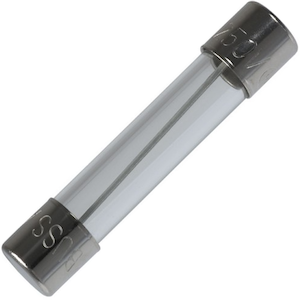Your Cart is Empty
Fuses
- 2CLE
- 2NCLPT
- 5CLE
- 5BCLS
- 5BHLE
- 5CLPT
- 5NCLPT
- 5.5ABWNA
- 5.5AMWNA
- 15CLE
- 15CLPT
- 15RBA4
- 15.5CAVH
- 170E
- 170H
- 170L
- 170M
- 24 and WER Type
- 25CLPT
- 70 Type
- 74 Type
- 80 Type
- 81 Type
- AAO
- ABS
- AC
- ACK
- ACL
- AD
- AFX
- AGA
- AGC
- AGW
- AGX
- ALS
- AMG
- AMI
- ANL
- ANN
- ATL
- ATR
- BAF
- BAN
- BBS
- BC
- BD
- C08G
- C08M
- C10G
- C10M
- C14G
- C14M
- C22G
- C22M
- Cable Limiter
- CBBF
- CD
- CEO
- CGL
- CHSF
- CT
- DD
- DEO
- DFJ
- DLN-R
- DLS-R
- DMM
- ECNR
- ECSR
- ED
- EDCC
- EET
- EF
- ESD
- ET
- FCF
- FE
- FEE
- FL
- FLB
- FLD
- FLF
- FLG
- FLJ
- FLM
- FLN
- FLS
- FM
- FMM
- FMM (Auto)
- FMS
- FMX
- FMX-LP
- FNA
- FNM
- FNQ
- FNQ-R
- FRN-R
- FRS-R
- Fuse Neutral
- Fuse Reducer
- FWA
- FWC
- FWH
- FWJ
- FWL
- FWP
- FWS
- FWX
- GBA
- GBB
- GLD
- GLQ
- GLR
- GMA
- GMC
- GMF
- GMT
- GMQ
- HAC-R
- HCLR
- HCTR
- HVA
- HVB
- HVJ
- HVR
- HVT
- HVU
- HVW
- HVX
- JCD
- JCE
- JCI
- JCK
- JCL
- JCN
- JCQ
- JCT
- JCY
- JCW
- JCX
- JDL
- JFL
- JJN
- JJS
- JKS
- KAA
- KAB
- KAC
- KAJ
- KAW
- KAX
- KAZ
- KBC
- KBH
- KLM
- KLU
- KON
- KOS
- KRP-C
- KTK
- KTK-R
- KTN-R
- KTS-R
- KTU
- LCL
- LCT
- LENRK
- LESRK
- LET
- LKN
- LKS
- LMT
- LMMT
- LP-CC
- LPJ
- LPN-RK
- LPS-RK
- MAX
- MB
- MCL
- MEN
- MEQ
- MIC
- MID
- MIN
- MIS
- MRBF
- NH
- NITD
- NON
- NOS
- NSD
- OSD
- PON
- PV
- PVM
- REN
- RES
- S
- SA
- SAMI
- SC
- SFE
- SL
- SSD
- T
- TC
- TCF
- TCF-RN
- TDC10
- TDC11
- TDC180
- TDC600
- TJN
- TJS
- TL
- TPA
- TPC
- TPL
- TPM
- TPN
- TPS
- W
- A2D
- A2K
- A2Y
- A3T
- A4BQ
- A4BT
- A4BY
- A4J
- A6D
- A6K
- A6T
- A13X
- A155F
- A15QS
- A25X
- A25Z
- A30QS
- A480R
- A50P
- A50QS
- A60C
- A60Q
- A60X
- A70P
- A70Q
- A70QS
- A100P
- A120X
- A150X
- A240R
- A240T
- A480T
- A500T
- ACL
- AG
- AJT
- AO55F
- ATDR
- ATM
- ATMR
- ATQ
- ATQR
- CNL
- CNN
- DCT
- FES
- FR10GG50V
- FR10GR69V
- FSM
- GFN
- HP6J
- HP6M
- HP10J
- HP10M
- HP15M
- HSJ
- NRN
- NRS
- OT
- OTM
- OTN
- OTS
- RF
- RFS
- RL
- RLS
- SBS
- SLR
- SMF
- TR-R
- TRM
- TRS-R
- VSP
- Time Delay
- Fast Acting
- 179020 (5x20MM - 250V)
- 189020 (6.3x32MM - 500V)
- 2028220 (690V)
- 2028221 (700V)
- 5006006 (22x58MM - 600V)
- 5012406 (690V)
- 5012606 (14x51MM - 690V)
- 5014006 (22x58MM - 690V)
- 5014234 (22x58MM - 440V)
- 5017906 (10x38MM - 690V)
- 5019906 (10x38MM - 1000V)
- 5020106 (14X51MM - 700V)
- 5021006 (10x35MM - 1000V)
- 6003305 (10x38MM - 600V)
- 6003434 (10x38MM - 600V)
- 7000140 (250V)
- 7006584 (6.3x32MM - 400V)
- 7009463 (6.3x32MM - 600V)
- 7011509 (10x85MM - 3000V)
- 7012540 (6.3X32MM - 500V/600V/700V)
- 7017240 (6.3X32MM - 1000V)
- 9005805 (80V)
- 2CLE
- 2NCLPT
- 5CLE
- 5BCLS
- 5BHLE
- 5CLPT
- 5NCLPT
- 5.5ABWNA
- 5.5AMWNA
- 15CLE
- 15CLPT
- 15RBA4
- 15.5CAVH
- 170E
- 170H
- 170L
- 170M
- 24 and WER Type
- 25CLPT
- 70 Type
- 74 Type
- 80 Type
- 81 Type
- AAO
- ABS
- AC
- ACK
- ACL
- AD
- AFX
- AGA
- AGC
- AGW
- AGX
- ALS
- AMG
- AMI
- ANL
- ANN
- ATL
- ATR
- BAF
- BAN
- BBS
- BC
- BD
- C08G
- C08M
- C10G
- C10M
- C14G
- C14M
- C22G
- C22M
- Cable Limiter
- CBBF
- CD
- CEO
- CGL
- CHSF
- CT
- DD
- DEO
- DFJ
- DLN-R
- DLS-R
- DMM
- ECNR
- ECSR
- ED
- EDCC
- EET
- EF
- ESD
- ET
- FCF
- FE
- FEE
- FL
- FLB
- FLD
- FLF
- FLG
- FLJ
- FLM
- FLN
- FLS
- FM
- FMM
- FMM (Auto)
- FMS
- FMX
- FMX-LP
- FNA
- FNM
- FNQ
- FNQ-R
- FRN-R
- FRS-R
- Fuse Neutral
- Fuse Reducer
- FWA
- FWC
- FWH
- FWJ
- FWL
- FWP
- FWS
- FWX
- GBA
- GBB
- GLD
- GLQ
- GLR
- GMA
- GMC
- GMF
- GMT
- GMQ
- HAC-R
- HCLR
- HCTR
- HVA
- HVB
- HVJ
- HVR
- HVT
- HVU
- HVW
- HVX
- JCD
- JCE
- JCI
- JCK
- JCL
- JCN
- JCQ
- JCT
- JCY
- JCW
- JCX
- JDL
- JFL
- JJN
- JJS
- JKS
- KAA
- KAB
- KAC
- KAJ
- KAW
- KAX
- KAZ
- KBC
- KBH
- KLM
- KLU
- KON
- KOS
- KRP-C
- KTK
- KTK-R
- KTN-R
- KTS-R
- KTU
- LCL
- LCT
- LENRK
- LESRK
- LET
- LKN
- LKS
- LMT
- LMMT
- LP-CC
- LPJ
- LPN-RK
- LPS-RK
- MAX
- MB
- MCL
- MEN
- MEQ
- MIC
- MID
- MIN
- MIS
- MRBF
- NH
- NITD
- NON
- NOS
- NSD
- OSD
- PON
- PV
- PVM
- REN
- RES
- S
- SA
- SAMI
- SC
- SFE
- SL
- SSD
- T
- TC
- TCF
- TCF-RN
- TDC10
- TDC11
- TDC180
- TDC600
- TJN
- TJS
- TL
- TPA
- TPC
- TPL
- TPM
- TPN
- TPS
- W
- A2D
- A2K
- A2Y
- A3T
- A4BQ
- A4BT
- A4BY
- A4J
- A6D
- A6K
- A6T
- A13X
- A155F
- A15QS
- A25X
- A25Z
- A30QS
- A480R
- A50P
- A50QS
- A60C
- A60Q
- A60X
- A70P
- A70Q
- A70QS
- A100P
- A120X
- A150X
- A240R
- A240T
- A480T
- A500T
- ACL
- AG
- AJT
- AO55F
- ATDR
- ATM
- ATMR
- ATQ
- ATQR
- CNL
- CNN
- DCT
- FES
- FR10GG50V
- FR10GR69V
- FSM
- GFN
- HP6J
- HP6M
- HP10J
- HP10M
- HP15M
- HSJ
- NRN
- NRS
- OT
- OTM
- OTN
- OTS
- RF
- RFS
- RL
- RLS
- SBS
- SLR
- SMF
- TR-R
- TRM
- TRS-R
- VSP
- Time Delay
- Fast Acting
- 179020 (5x20MM - 250V)
- 189020 (6.3x32MM - 500V)
- 2028220 (690V)
- 2028221 (700V)
- 5006006 (22x58MM - 600V)
- 5012406 (690V)
- 5012606 (14x51MM - 690V)
- 5014006 (22x58MM - 690V)
- 5014234 (22x58MM - 440V)
- 5017906 (10x38MM - 690V)
- 5019906 (10x38MM - 1000V)
- 5020106 (14X51MM - 700V)
- 5021006 (10x35MM - 1000V)
- 6003305 (10x38MM - 600V)
- 6003434 (10x38MM - 600V)
- 7000140 (250V)
- 7006584 (6.3x32MM - 400V)
- 7009463 (6.3x32MM - 600V)
- 7011509 (10x85MM - 3000V)
- 7012540 (6.3X32MM - 500V/600V/700V)
- 7017240 (6.3X32MM - 1000V)
- 9005805 (80V)
Fuse 101
October 01, 2018 1 min read

What is a Fuse?
A fuse is essentially a short piece of wire designed to self-destruct in the event of an electrical overload. Under healthy circumstances, the current will flow from one side of the fuse to the other. If there is a power surge or the current is stronger than the fuse was designed for, the fuse will melt or burn in half and blow. The current will not be able to flow through, preventing damage to the whole circuit.
Fuse Basics
There are many varieties of fuses with different specifications such as amperage, voltage, blow type, size, and material.
Amperage Rating (A): indicates how much current a fuse can carry. When replacing a fuse, do not replace it with one of higher amperage
Voltage (V): indicates the maximum supply voltage that a fuse can carry. When replacing a fuse, the voltage rating must match or exceed the one stamped on the fuse.
Blow Type: Fast-Blow vs Slow-Blow/Time-Delay. A fast-blow fuses, as its name suggests, blows almost immediately after the current surpasses the its amperage rating. It has a very thin wire. These fuses are designed for systems where a short overload will blow the entire circuit, such as a multimeter. Slow-Blow fuses or Time-Delay fuses will tolerate a modest number of short overloads. They have a thick coiled wire and will only blow only on a continued overload, such as a short circuit. For this reason, do not replace the original fast-blow fuse with a slow-blow replacement. It is safe to replace a slow-blow with a fast-blow, although it may blow unnecessarily.
Dimensions: Measure your fuse this way:


